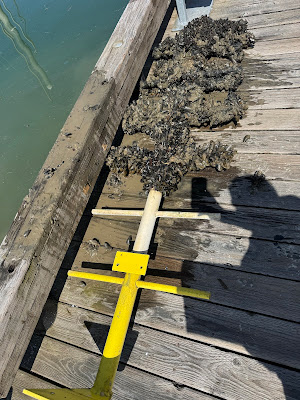 |
| Captain Ron quotes |
As most boat owners know, this is a true statement.
After Bill completed his battery install, and rewire project, we did what we call “cruise at the dock”. This means turning off the shore power cord, and utilizing all of our electrical needs on the battery system alone. Everything performed flawlessly, of course, even after multiple times of cruising at the dock. We left our slip feeling confident that our new system would sustain us, and result in a large savings in diesel fuel for the generator.
Murphy loves a commotion, so one of our brand new components failed, and we headed for a nearby anchorage to assess, and look for fixes/alternatives. Bill saw the issue, and after talking to the company, they decided to send us a new part. This means hanging close to Wrangell, so we can head into the post office, pick up the shipment, and do the installation at the dock. It means turning off ALL the power, and that’s not something we want to do out at anchor. Murphy and all…..
As always, we enjoy hearing from you, either here in comments or on our Facebook Denali Rose Sailboat page.












